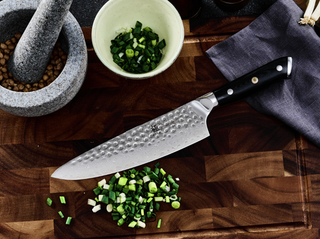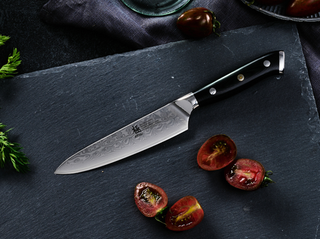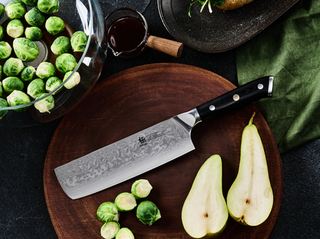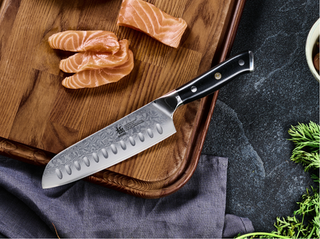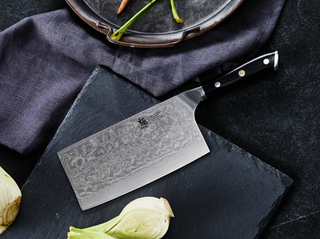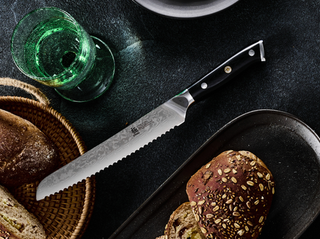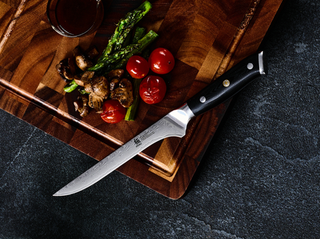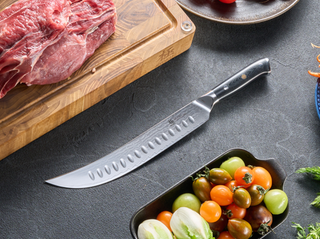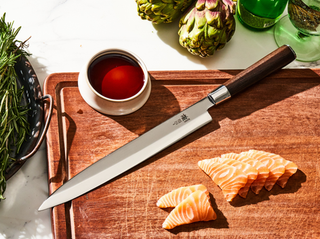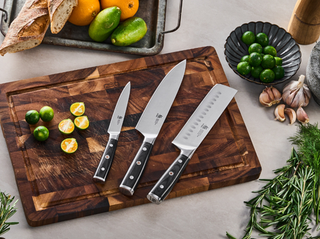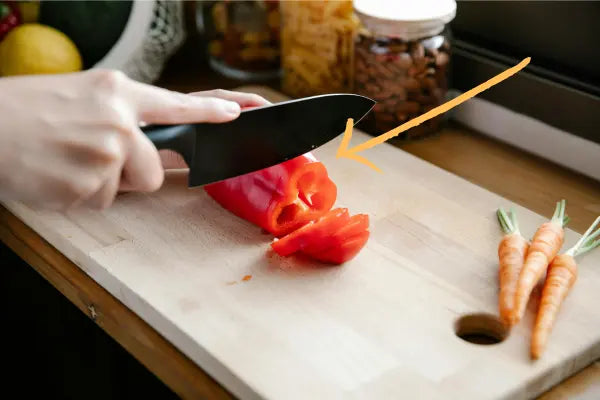Cutting bell peppers is not as easy as it might seem. How you slice your bell peppers can make a big difference in how much flavor you get from them and how presentable they look on the plate.
I am walking you through five simple but effective ways to cut bell peppers—specifically for strips, kabobs, fajitas, stir-fry, and salads. Each method is easy to follow and will help you get the most out of this vibrant veggie.
I will also be recommending the best Japanese knives I use for his task, for no other reason than they are perfect, and I will have you check them out.
Preparing Your Bell Peppers For Cutting
The first step when it comes to cutting bell peppers is to wash, remove all seeds, and clean off the placenta ( the spongy, pale-colored tissue that connects the seeds to the inner walls).
Keep in mind that you must cut the bell peppers to suit the style and type of dish you're making. Whether you're preparing kabobs, a stir-fry, or a fresh summer salad, each one calls for a different cutting method.
So, let’s discuss the most typical cutting styles and choose the one that suits every meal.

Cutting Bell Peppers Into Strips
Follow this method to cut bell peppers into strips for munching, cooking, or putting into various dishes.
-
Slice off the top and bottom of the pepper with a sharp chef’s knife.
-
Stand it upright, make a vertical slit, and carefully roll and unpeel the pepper wall away from the core.
-
Lay the pepper skin-side down and slice into strips of your desired thickness.
Plus, cutting bell peppers into strips makes storing and stacking easy: it is a good practice for meal prepping.
Cutting Bell Peppers for Kabobs
The colors and flavors of grilled kabobs really stand out when the bell peppers are cut the right way. Bell peppers for kebab have to be cut in such a way that they are still firm enough and not fall off the skewers while grilling.
Follow these steps:
- Slice off the top and bottom parts of the pepper.
- Separate the pepper and slice it into big square pieces that are about 1 to 1.5 inches across.
-
Finally, thanks to their firmness, these pieces won’t quickly fall off the skewers when you grill them.
Cutting Bell Peppers for Fajitas
If you’ve ever wondered how to cut bell peppers to get that perfect fajita texture—soft with just a little crunch—here’s how I do it.
- In the first place, take the top and bottom parts off the pepper.
- Subsequently, take out the core and next cut the flat pepper pieces into thin, long slices, making sure they aren’t too small.
- Lastly, arrange the pieces so they are the same size, so they cook at the same rate in the pan.
This is when knowing how to cut bell peppers into strips really pays off. Fajitas need to be special because texture and uniformity play important roles.
Cutting Bell Peppers for Stir Fry
For stir fry, you want to cut the bell peppers in a way that allows them to stay crunchy even after direct cooking. Follow these steps:
- Cut off the stem and core from the pepper before moving forward.
- Slice it into quick-frying pieces: short and thin strips or half-moon shapes.
- Try to keep the bell peppers of the same thickness to get even results.

Cutting Bell Peppers for Salad
For salads, slice your bell peppers into rings, strips, or small diced pieces to let their crisp, fresh flavor shine through and elevate the dish. Follow these steps:
- First, to cut small rings. Go crosswise through each pepper from edge to edge.
- After the strips are cut, cut them into small squares so they can be diced.
- Mince the ingredients with smooth and small strokes for the best chopped salad.
Here, it becomes obvious why the best chef knives are able to handle many jobs. Since every series uses high-tech blades and comfy material, it’s easy to complete any food prep with them.
Best Knives for Cutting Bell Peppers (And Everything Else)
The quality of your knife greatly affects how easily, thinly, and neatly you can cut bell peppers. A sharp, well-made knife slices through the skin and flesh cleanly, keeping the pieces uniform and leaving you with little or no mess.
If your knife is dull, the process might be slow, and you might end up crushing the pepper or creating jagged cuts.
Here are some of my favorite Japanese knives to cut bell peppers and other vegetables, and spices.

Best Knife for Cutting into Strips
For cutting your bell peppers into strips, you want a sleek, handy stainless steel knife like the 8" Gyuto Chef Knife. Made of VG10 Damascus steel, with a hammered surface that makes the blade move smoothly and stops the ingredients from clinging to it.
For Cutting Bell Peppers for Kabobs/ Salads
Cutting bell peppers for kabobs requires a good measure of precision and a lot of hand movement. You want a lightweight knife with good balance.
The handle of the Gyuto chef knife is ergonomically designed in rosewood. Easy to maintain control while slicing bell peppers for my kabobs.
Another great knife for cutting bell peppers for kabobs would be this 8-inch chef's knife from the Gin series. It also has a comfortable rosewood handle, but an even firmer edge. Just a little pressure, and it slices through. Perfect for prepping your bell peppers for kabobs and salads.
How to Store Cut Bell Peppers
If you’re wondering how to store cut bell peppers, you’re not alone. I often threw away lots of food in the past because I didn’t know how to stop it from spoiling.
Here’s what works best:
- Put sliced peppers in a sealed container that is lined with a paper towel.
- It is best to keep fruits and vegetables in the fridge’s crisper drawer.
- Enjoy them within three or five days for the best results.
Knowing how to store cut bell peppers in the fridge not only reduces waste but saves prep time during busy weeks.
FAQs About Cutting Bell Peppers
Which bell pepper is the sweetest?
Red bell peppers are the most delicious among bell peppers. Ripe bell peppers are able to taste fruitier than the ones that are green, yellow, or orange.
Can you eat bell pepper seeds?
Yes, but the seeds are rather bitter in taste and quite tough. I like to take them out since they do not contribute anything to the taste of the food.
How to tell if bell pepper is bad?
Whenever your bell pepper is wrinkled, slimy, or darkened, you should discard it. The skin of a fresh pepper should look vibrant and appear firm.
Conclusion
A little bit of practice and some tools will help you get slicing perfectly very fast. Once you are good at every technique, always store your remaining food properly to keep it fresh for your next meal.
So, if you’ve ever struggled with how to cut bell peppers into strips or keep them fresh in the fridge, I hope this guide helps you feel more confident in the kitchen.
Ready to sharpen your skills even further? Explore Kyoku’s full collection of premium chef knives today.
